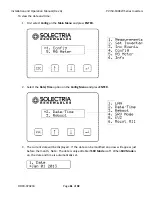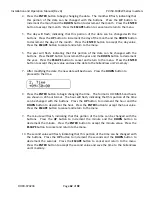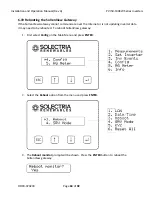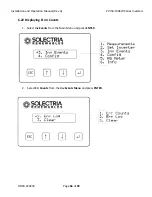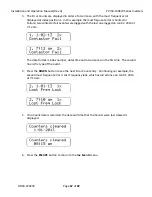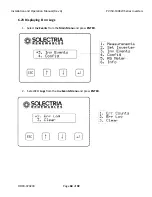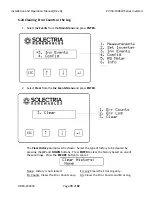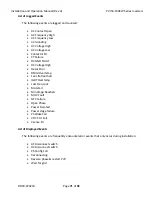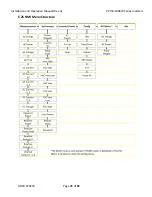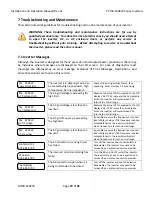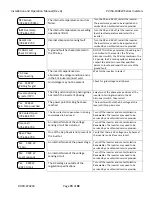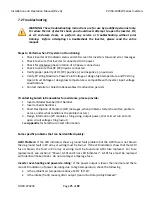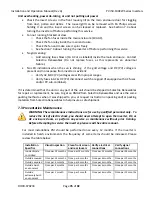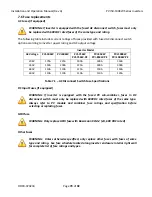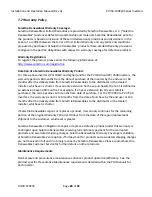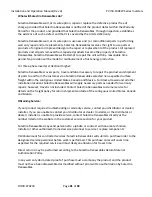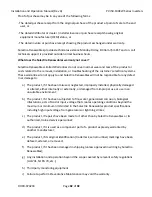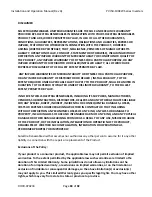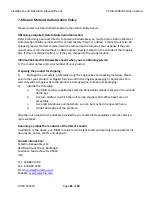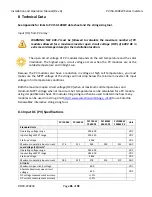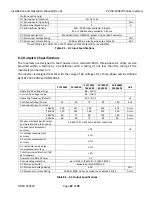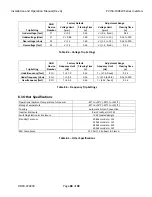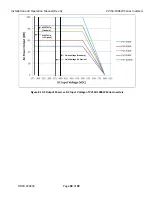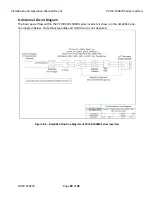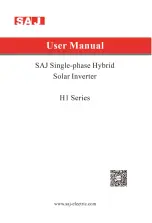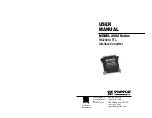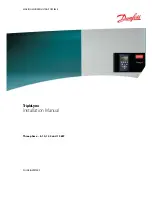
Installation
and
Operation
Manual
(Rev
A)
PVI
50
‐
100KW
Series
Inverters
DOCR
‐
070233
Page
75
of
92
7.2
Troubleshooting
WARNING:
These
troubleshooting
instructions
are
for
use
by
qualified
personnel
only.
To
reduce
the
risk
of
electric
shock,
you
should
never
attempt
to
open
the
inverter,
DC,
or
AC
enclosure
doors,
or
perform
any
service
or
troubleshooting
without
prior
training.
Before
attempting
to
troubleshoot
the
inverter,
please
read
the
entire
manual.
Steps
to
Perform
when
PV
system
not
functioning:
Check
inverter
LED
indicator
status
and
LCD
screen
for
inverter
status
and
error
messages
Check
to
ensure
that
inverter
is
connected
to
AC
power
Check
for
clockwise
phase
rotation
of
AC
power
connections
Check
to
ensure
that
DC
(PV)
input
is
connected
Verify
proper
polarity
of
DC
(PV)
positive
(+)
and
negative
(
‐
)
input
pairs
Verify
PV
string
Maximum
Power
Point
Voltage
at
design
high
temperature
and
PV
string
Open
Circuit
Voltage
at
design
low
temperature
is
compatible
with
inverter
input
voltage
specifications.
Contact
installer
or
Solectria
Renewables
if
malfunction
persists
If
contacting
Solectria
Renewables
for
assistance,
please
provide:
1.
Inverter
Model
Number/Part
Number
2.
Inverter
Serial
Numbers
3.
Short
Description
of
Problem
(LCD
messages,
when
problem
started,
how
often
problem
occurs,
under
what
conditions
the
problem
occurs)
4.
Design
Information
(PV
modules,
string
sizing,
output
power,
short
‐
circuit
current
and
open
circuit
voltage
string
layout)
See
Appendix
for
Solectria
contact
information.
Some
specific
problems
that
can
be
identified
quickly:
GFDI
Problem:
If
the
LED
indicators
show
a
ground
fault
problem
but
the
GFDI
fuse
is
not
blown
then
a
ground
fault
in
PV
array
or
wiring
must
be
found.
If
the
LED
indicators
show
that
the
GFDI
fuse
is
blown,
the
fault
in
PV
array
or
wiring
must
be
found
and
GFDI
fuse
replaced.
For
fuse
replacement,
see
section
4
“Power,
GFDI
and
Error
LED
Indicators”.
GFDI
fuse
must
be
replaced
with
identical
make/model.
Do
not
use
larger
amperage
fuse.
Inverter
over
‐
heating
and
power
de
‐
rating:
If
the
power
output
is
lower
than
normal
and
there
is
an
LED
indication
of
power
de
‐
rating
due
to
high
temperature,
check
the
following
Is
the
ambient
air
temperature
above
130°F
(55
o
C)?
Is
the
intake
(front)
louver
grill
or
output
(rear
or
bottom)
visibly
blocked?

